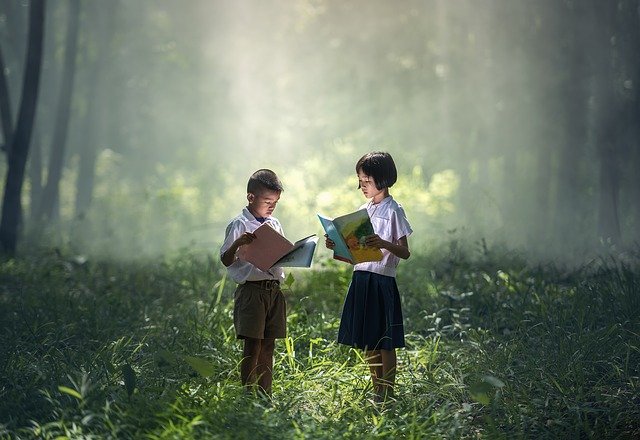Welcome. In this post about kids and sustainability, I’ll explain the term “sustainability” and 13 ways you can teach students sustainable practices in the classroom. You’ve come to the right place to learn about sustainability, how you can help kids understand what this word means and how they can practice it. Wonder no more; if you’re wondering how to explain sustainability to kids or if you’re thinking of trying to get them to practice it.
What is Sustainability?

Sustainability in simple terms means not using up everything we have today so that future generations can benefit.
Sustainability is the only word that ensures our children and future generations enjoy the wonderful things we are enjoying today. We need to apply sustainability to every aspect of our lives.
We are comfortable at the moment, because we have everything we need. But will this be the case in a couple of years from now or would resources run out if they’re not properly managed?
This is an important question we need to ask ourselves and this is why we all need to work together to preserve the earth in every way possible so that the wonderful things we enjoy today will still be there for ourselves, children, grandchildren and great grand children…
According to the Brundlandt report, “Sustainable development is development that meets the needs of the present without compromising the ability of future generations to meet their own needs.”
Here’s a good example
Take for example the part of your refrigerator that makes ice. As you take ice from the refrigerator, the ice maker keeps producing more ice. If we keep taking ice, the ice will be all gone and it may take some time for more ice to be produced! It just shows that there’s a limit to the amount of things we can use.
Some resources are already disappearing while some are causing serious problems just because there’s really not enough for mankind.
Do not use up everything today, so that future generations can enjoy it too!
Now, this is where sustainability comes in. This important word “sustainability” looks at how we can manage resources so they last forever just like the ice maker that keeps refilling!
The best thing here for each and everyone of us is to manage resources so that they can last long. Also, companies that manufacture products should ensure they make use of sustainable materials and operations, to avoid depletion of natural resources.
Kids and Sustainability
Now when it comes to students, you would need to teach them how to practice sustainability in simple ways:
1. Explain the meaning of sustainability and lead by example

Inspire your students through your own actions and taking simple steps would go a long way. Turning off the lights, carrying a reusable bottle or mug are great examples this way, students can be encouraged to join the sustainability movement.
2. Reduce, Reuse, Recycle – Make use of what you already have over and over again

Image by PublicDomainPictures from Pixabay
Have your students take a look at their trash to see the kinds of materials they throw away. Which material was the most? Let students brainstorm on ways they can cut down on waste.
Upcycle materials like paper and cardboard boxes for projects. Worksheets are a great part of a teacher’s life, but that’s no excuse. We can manage the amount of waste paper we generate by:
- Having a designated scrap paper table.
- Organizing students loose worksheets in folders, that way they last longer.
- Use shredded paper for arts and crafts.
- Involve students in caring for their classroom and school. For example, they can be involved in picking up trash. Students can even carry out a waste audit on the types and amount of trash collected. Ensure they wash their hands after this activity.
3. Make Your Compost Bin Visible and label it

Image by Alexas_Fotos from Pixabay
A waste station comprises a waste bin, a recycling bin and a compost bin. Ensure you have a compost bin in your classroom so that things like banana peel, apple core can be placed there. If there is no compost bin in the classroom, students will likely place these materials in the trash! Ensure you put signs on your bins so students know where materials go.
Your school can even make it mandatory for students to only bring lunches and snacks in reusable containers. Encourage everyone to only bring in reusable bottles, reusable bowls and lunch boxes. You can also make announcements regularly to remind students and parents. This will help students reduce waste at school and in the community.
4. Maximize Sustainability with the right bins
Yes. I know I already talked about this but I believe it is important to ensure your classroom and your entire school has the appropriate recycling and waste bins in place. This will make recycling easy and less stressful.
5. Water Conservation

Image by silviarita from Pixabay
Explain the importance of water conservation to students. Encourage them to turn off taps after use, reusable water bottles would also help reduce water wastage.
Several parts of the world suffer from shortage of clean water despite the fact that about 70% of the earth contains water. This means that there is limited supply of water and we must learn to keep it clean and free of pollution for ourselves and future generations. Water conservation means being responsible with water supply usage.
Did you know that fresh water makes up only a tiny portion of the water on earth? While almost 70% of the Earth is made up of water, only 2.5% of this is fresh while the result is salt water! Alarming isn’t it? Many parts of the world also suffer from clean water shortage. Also, only 1% of the fresh water is accessible with majority of it trapped in glaciers!
6. Think Sustainability when it comes to Classroom supplies

Its fun and exciting hurrying off to start getting cute pencils, crayons and erasers for the start of every new school year; before shopping for new classroom supplies, pause and take a look at what you already have before buying. You can also check a secondhand store for some materials.
7. Connect students to nature

Image by Sasin Tipchai from Pixabay
Here are some ways you can do this:
– Have them check the weather
– Outdoor classes can be conducted and also nature walks
– Field trips to a large farm where animals are bred.
– Add plant care to students responsibility
– Connect students and animals. Bring in classroom pets. Have a discussion with the students and let the students ask questions.
8. Older students serve as role models for younger ones

Image by Oberholster Venita from Pixabay
Older students are role models for younger ones so let them spread the word among younger students. Great ways to spread the word include stage drama and presentations with focus on environmental issues and ways to address them.
9. Your Custodian can help you

Image by Steve Buissinne from Pixabay
Your custodians are very important and they can help manage your school’s waste management program. Work closely with your custodians by treating them as your teammate. Make their job easier by involving students too. Ask your custodians questions about the waste and recycling your school generates. If they notice any contamination in the recycling stream, they should notify staff immediately so that the issue can be addressed.
10. Environmental fashion show

Image by Ahmad Ardity from Pixabay
Make resource conservation fun by devoting a day during the school year to celebrate the Environment. Let kids get creative by dressing up in clothing made out of sustainable materials and let them showcase their talent. They can wear their newly designed costumes on their real clothes depending on their creations.
11. Ask Parents to donate things that could be useful for your own classroom

Image by Markus Winkler from Pixabay
This may not be the best time to ask for second hand items like toys, cushions, used board games, cardboard and cereal boxes to be donated but when everything goes back to normal, these would be useful in your classroom for crafts, projects and even for beautifying your classroom. Now before you ask for donations, be specific. You want to ensure that the items that will be donated will be used and not stored away! You can also ask parents for project ideas too.
12. Environmental Posters
Hang up recycling posters in visible spots This will serve as a reminder to students and staff so that they can think about something before throwing it away.
13. Abide by New Rules
Also, check with your school board to see if there are any new rules that you may need to adhere to, given the current situation of the corona virus pandemic. The main thing is keeping students and staff safe. Safety comes first.
Conclusion
These are awesome ways you can make sustainability a matter of great importance to kids in your classroom. This post about kids and sustainability has laid out some methods on how kids can exhibit sustainability practices. The important thing is to reduce the waste we generate, reuse as much as we can and recycle just like I explained in a previous post about Closing the Loop.
If you have to buy anything ensure you really do need it and that its something that will last long.
Sustainability does not end in the classroom. Once students have a good understanding of sustainability and know why it is important, they will be able to communicate this to their friends and families and even the community; after all doing what is right for our planet is what matters!
I hope you found this post helpful. Which of these sustainable practices are you going to try? Are there more ideas you would love to share with me? Let me know in the comments below.

